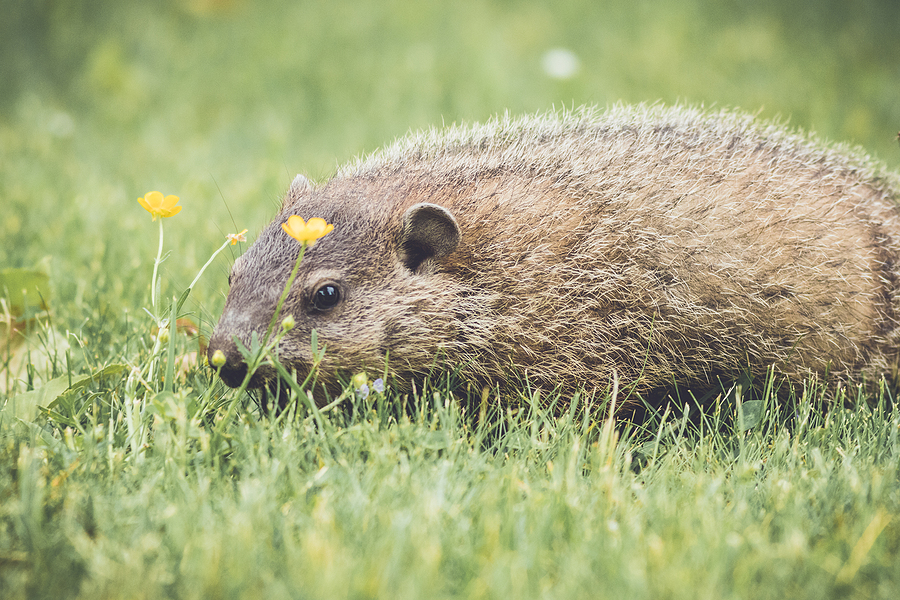Groundhogs, while intriguing creatures to observe in the wild, can become a real challenge when they decide to make your backyard their home. These burrowing animals are known for their appetite for vegetation and can quickly turn a beautifully landscaped garden into their personal buffet. However, as stewards of our environment, it’s essential to find ways to coexist with these animals using safe and humane strategies.
This blog post will explore several non-lethal methods to deter groundhogs from your property, ensuring both the safety of these creatures and the preservation of your garden. Join us as we explore effective, compassionate solutions for managing groundhog visitors.

Understanding Groundhog Behavior
Before we dive into the various deterrence strategies, it’s essential to understand a bit about groundhog behavior. Also known as woodchucks, these rodents are primarily herbivores and can consume up to a pound of vegetation per day. They are active during the daytime and are skilled diggers, creating extensive underground tunnels for shelter and protection. Groundhogs also have a strong sense of smell and can be easily frightened by loud noises or strong odors. Keeping these behaviors in mind will help us devise effective deterrence strategies.
Additional Interesting Facts About Woodchucks:
▶ They can whistle when they sense danger, earning them the nickname “whistle-pig.”
▶ They are also called woodchucks because of their ability to dig and move soil quickly, resembling the actions of a lumberjack.
▶ They are excellent climbers and can scale trees to escape predators.
▶ They have a thick layer of fat that allows them to hibernate for up to six months during the winter.
Most Effective Groundhog Deterrents
Fencing
One of the most reliable ways to keep nuisance groundhogs away from your garden is by installing fencing around the perimeter. The fence should be at least three feet high, with an additional foot buried underground to prevent digging. Use wire mesh, such as chicken or hardware cloth, which has smaller holes that woodchucks cannot squeeze through. The fence should also have a top portion angled outward to discourage climbing. Adding a gate can provide easy access for humans while keeping groundhogs out.
Natural Repellents
Woodchucks are deterred by strong and unfamiliar scents. You can use natural repellents, such as garlic, cayenne pepper, or predator urine, around the perimeter of your garden to discourage these animals from entering. These substances emit an odor that groundhogs find unpleasant and will often avoid.
Live Trapping
Live trapping is another effective method for managing groundhog populations. This humane approach involves using a cage trap to capture the groundhog and then releasing it in a nearby natural area. When attempting DIY animal removal and control, it is important to check local laws and regulations before trapping and releasing wildlife. The best approach is to hire a professional wildlife removal company for woodchuck removal and control service.
Habitat Modification
Groundhogs are attracted to areas with ample food sources and places to burrow. By making your property less appealing, you can discourage them from taking up residence. Keep grass trimmed and remove any debris or brush piles where groundhogs could hide. You can also plant vegetation that is not attractive to groundhogs, such as daffodils, marigolds, or lavender.
Professional Help
If you are unsure how to handle a groundhog infestation, your local laws prohibit DIY methods, or you simply find that the above methods are not effective, it’s best to seek professional animal removal help. Contact your wildlife control service providers for assistance in safely removing and relocating woodchucks from your property.
Conclusion
In conclusion, while woodchucks may seem like a nuisance at first, there are plenty of safe and humane strategies for deterring them from your property. By understanding their behavior and utilizing methods such as fencing, natural repellents, live trapping, habitat modification, and seeking professional help, we can coexist with these animals peacefully.
Let’s remember to show compassion towards all living creatures while finding ways to protect our gardens at the same time. So, next time you spot a groundhog in your yard, remember these humane deterrence strategies, and find an effective solution that works for both you and the groundhog.
Are you struggling with a woodchuck problem and need immediate, humane assistance? Don’t wait for the situation to escalate. Contact Modern Wildlife Control at 317-847-6409 for safe and effective groundhog removal and control in Indianapolis, Indiana. Our wildlife removal services are humane, effective, and available for both residential and commercial clients.
Related Posts:
Protect Your Gardens: Expert Tips for Groundhog Removal
How to Identify Problem Woodchuck Areas on Your Property
Top Critter Control Tips for Nuisance Groundhogs
